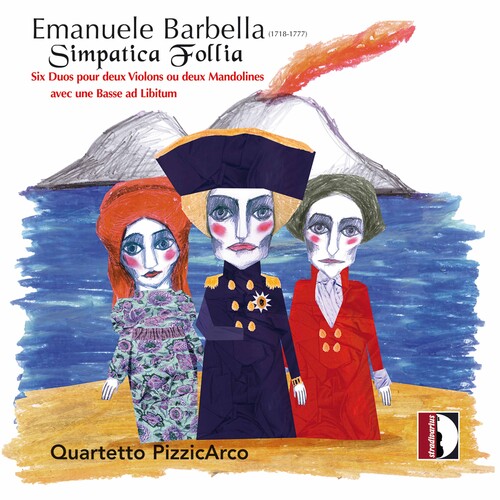Show results for
Deals
- 4K Ultra HD Sale
- Action Sale
- Alternative Rock Sale
- Anime sale
- Award Winners Sale
- Bear Family Sale
- Blu ray Sale
- Blues on Sale
- British Sale
- Classical Music Sale
- Comedy Music Sale
- Comedy Sale
- Country Sale
- Criterion Sale
- Electronic Music sale
- Fantasy Film and TV
- Folk Music Sale
- Hard Rock and Metal Sale
- Horror Sci fi Sale
- Jazz Sale
- Kids and Family Music sale
- Kids and Family Sale
- Metal Sale
- Music Video Sale
- Musicals on Sale
- Mystery Sale
- Naxos Label Sale
- Page to Screen Sale
- Paramount Sale
- Pop and Power Pop
- Rap and Hip Hop Sale
- Reggae Sale
- Rock and Pop Sale
- Rock Legends
- Soul Music Sale
- TV Sale
- TV Sale
- Vinyl on Sale
- War Films and Westerns on Sale

Sinpatica Follia
- Format: CD
- Release Date: 3/4/2022

Sinpatica Follia
- Format: CD
- Release Date: 3/4/2022
- Composers: Emanuele Barbella
- Label: Stradivarius
- UPC: 8011570371768
- Item #: 2468685X
- Genre: Classical
- Theme: Baroque Era
- Release Date: 3/4/2022

Product Notes
The "sympathetic madness" was exactly that spark that continued to distinguish the instrumental production of the "Neapolitans" and which also transpires from the literature by Barbella dedicated to almandol, an instrument very dear to aristocratic circles as can now be deduced, in a self-evident way, from recent studies on this tool always betrayed by a history that relegated it exclusively to a "street" or just "popular" practice. The Six Duos were composed for 2 violins or 2 mandolins, as was customary in the practice of the time, which saw the same compositions performed on different instruments. Barbella also composed music for mandolin alone. Although his writing is less idiomatic than that, for example, of his fellow countryman Giovanni Battista Gervasio (c. 1725 - c. 1785, himself a mandolinist), Barbella manages to combine a refined compositional style, which he learned in the Neapolitan conservatories, with techniques and the pizzicato sound of the new mandolin, creating a new way of writing, with harmonies and sounds that had probably never been heard before. The listener can still perceive this new sound today in the performance offered to us on this CD, where the choice of the musicians was to perform the Duos not with two violins or two mandolins, but with a violin and a mandolin. A sound that we can legitimately imagine to be not so far from that heard by the listeners and performers of the time, given the great diffusion that the instrument had throughout Europe, as the iconography of the time illustrates.

